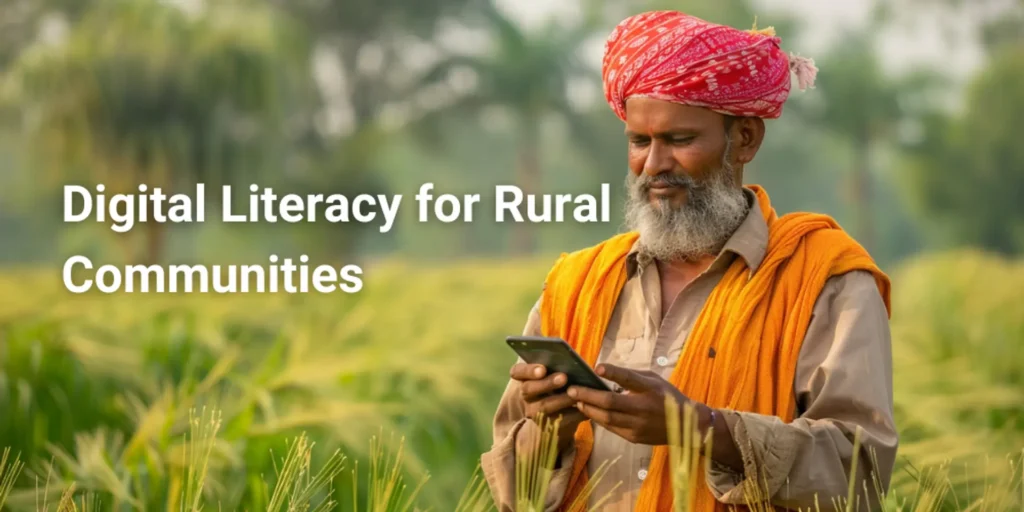Access to quality education in rural India has long been a challenge due to a lack of infrastructure, limited resources, and geographic isolation. But with the growing integration of technology in education, Digital Literacy Programs are bridging that gap. These initiatives are helping students, teachers, and even communities become part of a connected, informed, and digitally empowered society.
Parents seeking progressive schools that embrace innovation must consider how digital access and skills are being introduced even in remote areas. Verified Campus, the best school listing portal in Dehradun, helps parents evaluate whether a school is preparing children for the digital world.
What Are Digital Literacy Programs?
Digital Literacy Programs are structured initiatives aimed at teaching individuals how to access, understand, and responsibly use digital technology. These programs go beyond basic computer knowledge. They empower users to engage in online learning, access services, improve communication, and build 21st-century skills necessary in today’s economy.
In rural India, these programs are particularly impactful because they open up educational and professional opportunities previously unavailable in such regions. Whether it’s through mobile classrooms, local computer labs, or online training portals, digital literacy is becoming a vital part of rural development.
Why Digital Literacy Matters in Rural Education
The push for digital literacy programs in rural areas is not just about teaching how to use a device. It’s about changing lives. Here’s how:
1. Reducing the Digital Divide
There is a significant gap between urban and rural areas when it comes to internet access and digital resources. Digital literacy programs directly address this issue, ensuring that students from villages can access the same quality content as their urban counterparts.
2. Empowering Teachers and Schools
With training in ICT (Information and Communication Technology), rural teachers can improve their teaching methods and access a broader range of learning materials. This allows them to conduct interactive classes and personalize learning for students.
3. Encouraging Self-Learning and Curiosity
Children exposed to digital tools at a young age can use online platforms for self-directed learning. This promotes critical thinking and problem-solving—key aspects of 21st-century skills.
Government and NGO Initiatives Supporting Digital Literacy
India has launched various national programs and public-private partnerships to promote digital literacy programs in rural areas. Some notable ones include:
-
PMGDISHA (Pradhan Mantri Gramin Digital Saksharta Abhiyan): A flagship scheme aimed at making six crore rural households digitally literate.
-
Digital India Campaign: A broader movement promoting ICT in governance, education, and business.
-
CSR-backed NGO Programs: Many NGOs like Pratham, Digital Empowerment Foundation, and Smile Foundation are running digital literacy projects in villages, often in collaboration with schools.
These efforts are slowly transforming the rural education landscape, making digital access a reality.

Real-World Examples of Digital Literacy Impact
-
Mobile Learning Vans in Uttarakhand: Equipped with tablets, internet, and teachers, these vans travel to remote areas to conduct digital classes for underprivileged students.
-
Solar-Powered Computer Labs in Bihar: Where electricity is a challenge, solar-powered labs have enabled consistent digital education.
-
Community Wi-Fi in Maharashtra Villages: Public hotspots have helped both school students and adults participate in online learning access and services.
Such initiatives demonstrate how digital literacy is not only improving educational equity but also fostering community engagement and social development.
Role of Schools in Promoting Digital Literacy
Schools play a crucial role in ensuring that digital literacy programs are more than just short-term campaigns. A lasting impact requires integration into the school curriculum and infrastructure.
Schools that actively implement digital literacy:
-
Include ICT from early grades.
-
Provide teacher training for effective technology use.
-
Maintain smart classrooms and updated devices.
-
Use e-content aligned with national boards like CBSE.
Many such schools, especially in and around Dehradun, are listed on Verified Campus, giving parents an informed platform to evaluate digital readiness.
Parental Role in Supporting Digital Literacy
Parents are key stakeholders in ensuring the successful implementation of digital literacy programs. Here’s how they can contribute:
-
Encourage children to use digital devices constructively.
-
Participate in school-led digital awareness workshops.
-
Provide access to basic tools like smartphones or tablets.
-
Supervise and guide safe internet usage at home.
When parents understand the value of digital education, they can make better decisions while choosing schools and supporting their child’s academic journey.
Addressing Challenges in Rural Digital Education
Despite progress, several barriers still hinder the full impact of digital literacy programs in rural areas:
-
Connectivity Issues: Poor internet and mobile networks are still prevalent in remote regions.
-
Lack of Trained Staff: Teachers need regular training in digital tools and pedagogy.
-
Language Barriers: Much of the content is in English, making it inaccessible for non-English speakers.
-
Device Access: Not all families can afford digital devices for their children.
Overcoming these hurdles requires continuous investment from the government, communities, and education providers.

The Future of Digital Literacy in Rural India
The future of rural education in India is closely tied to the success of digital literacy programs. As India moves toward universal internet access, the scope for online learning, virtual classrooms, and AI-enabled education will only grow.
By aligning traditional values with modern tools, rural schools can create a balanced, inclusive, and future-oriented learning environment. This can ensure that every child, regardless of location, has the opportunity to learn and grow with confidence.
Choosing the Right School in the Digital Era
Parents in Dehradun and nearby regions looking for schools that align with modern education practices should consider whether the school supports digital literacy programs. Facilities like smart boards, computer labs, e-learning modules, and technology-enabled homework platforms are indicators of a future-ready school.
Verified Campus, the best school listing portal in Dehradun, allows parents to easily compare schools based on infrastructure, curriculum, digital readiness, and overall approach to holistic learning. This helps parents make a well-informed decision for their child’s education.
Conclusion: Digital Literacy Is the Key to Inclusive Education
Digital literacy programs are transforming rural India by opening up new opportunities in education, employment, and community development. They play a vital role in bridging the digital divide and ensuring that children in villages are not left behind in the global knowledge economy.
Parents have a critical role to play in recognizing the importance of digital literacy while choosing a school for their child. With tools like Verified Campus, the best school listing portal in Dehradun, parents can explore schools that are not only academically strong but also technologically forward, ensuring a brighter and more inclusive future for every child.


